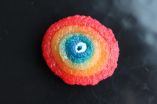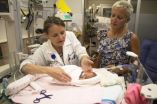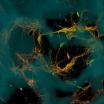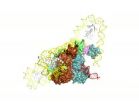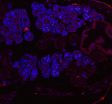(Press-News.org) MEDFORD/SOMERVILLE, Mass. (August 11, 2014) --The human brain remains one of the least understood organs in the human body, because of its complexity and the difficulty of studying its physiology in the living body. Tufts University researchers today announced development of the first reported complex three-dimensional model made of brain-like cortical tissue that exhibits biochemical and electrophysiological responses and can function in the laboratory for months. The engineered tissue model offers new options for studying brain function, disease and trauma, and treatment. The National Institutes of Health funded research is reported in the August 11 Early Edition of the Proceedings of the National Academy of Sciences.
Advancing the study of brain trauma, disease and therapeutic treatments is something that the paper's senior and corresponding author David Kaplan, Ph.D., has wanted to pursue for a long time. Kaplan is Stern Family professor and chair of biomedical engineering at Tufts School of Engineering. "There are few good options for studying the physiology of the living brain, yet this is perhaps one of the biggest areas of unmet clinical need when you consider the need for new options to understand and treat a wide range of neurological disorders associated with the brain. To generate this system that has such great value is very exciting for our team," said Kaplan, who directs the NIH-funded P41 Tissue Engineering Resource Center based at Tufts.
Rather than reconstructing a whole-brain network, the Tufts team created a modular design that replicated fundamental features most relevant to the brain's tissue-level physiological functions.
Each module combined two materials with different properties: a stiffer porous scaffold made of cast silk protein on which the cortical neurons, derived from rats, could anchor and a softer collagen gel matrix that allowed axons to penetrate and connect three dimensionally. Circular modules of cast silk were punched into doughnuts, then assembled into concentric rings to simulate the laminal layers of the neocortex. Each layer was seeded with neurons independently before assembly, without the need for adhesive or glue. The doughnuts were then immersed in the collagen gel matrix.
The silk-collagen gel combination provided an optimum microenvironment for neural network formation and function. "The stiffness of the silk biomaterial could be tuned to accommodate the cortical neurons and the different types of gels, maintaining both stability in culture and brain-like tissue elasticity," said the paper's first author, Min D. Tang-Schomer, Ph.D., post-doctoral scholar in biomedical engineering at Tufts. "The tissue maintained viability for at least nine weeks—significantly longer than cultures made of collagen or hydrogel alone—and also offered structural support for network connectivity that is crucial for brain activity."
Studying Brain Damage
The Tufts researchers were able to use the tissue model to examine multiple post-injury effects, including cellular damage, electrophysiological activity and neurochemical changes. For example, when a weight was dropped on the model tissue to simulate a traumatic brain injury, the tissue released high levels of the chemical glutamate, a neurotransmitter known to be emitted by cells following brain damage; the tissue also showed transient electrical hyperactivity consistent with post-trauma responses observed in vivo.
"This model provides a unique opportunity for mapping out real-time neurophysiological events and function studies in the laboratory, monitoring that is prohibitive with humans or animals," said study co-author Philip Haydon, Ph.D., Annetta and Gustav Grisard professor of neuroscience at the Sackler School of Graduate Biomedical Sciences, Tufts University School of Medicine.
Kaplan said that work is underway to further develop the model. It could potentially be applied to study brain structure-function, drug screening, impact of electrodes and implants on brain function, disease formation and treatments, and the effects of nutrition and toxicants. "This is the first step," he said.
INFORMATION:
Paper authors also included James White, Ph.D., post-doctoral scholar in biomedical engineering at Tufts; Lee W. Tien, Ph.D., licensing associate at Tufts and former graduate research assistant in biomedical engineering; L. Ian Schmitt, Ph.D. in neuroscience from the Sackler School of Graduate Biomedical Sciences at Tufts University School of Medicine; Thomas Valentin, M.S., former Tufts graduate research assistant in biomedical engineering; Daniel Graziano, B.S. in chemical and biological engineering from Tufts and former biomedical research assistant; Amy Hopkins, Ph.D. in biomedical engineering from Tufts; and Fiorenzo G. Omenetto, Ph.D., Frank C. Doble professor of biomedical engineering and professor of physics.
This research was supported by P41 Tissue Engineering Resource Center of the National Institutes of Health under award number: EB002520.
"Bioengineered functional brain-like cortical tissue," Min D. Tang-Schomer, James White, Lee W. Tien, L. Ian Schmitt, Thomas Valentin, Daniel Graziano, Amy Hopkins, Fiorenzo G. Omenetto, Philip G. Haydon, and David L. Kaplan; doi/10.1073/pnas.1324214111
This content is solely the responsibility of the authors and does not necessarily represent the official views of the NIH.
Located on Tufts' Medford/Somerville campus, the Tufts University School of Engineering offers a rigorous engineering education in a unique environment that blends the intellectual and technological resources of a world-class research university with the strengths of a top-ranked liberal arts college. Close partnerships with Tufts' excellent undergraduate, graduate and professional schools, coupled with a long tradition of collaboration, provide a strong platform for interdisciplinary education and scholarship. The School of Engineering's mission is to educate engineers committed to the innovative and ethical application of science and technology in addressing the most pressing societal needs, to develop and nurture twenty-first century leadership qualities in its students, faculty, and alumni, and to create and disseminate transformational new knowledge and technologies that further the well-being and sustainability of society in such cross-cutting areas as human health, environmental sustainability, alternative energy, and the human-technology interface. For more information, visit http://engineering.tufts.edu.
Bioengineers make functional 3-D brain-like tissue model
Tufts model shows biochemical & electrophysiological responses; research offers new options for study of brain function, disease and trauma
2014-08-11
ELSE PRESS RELEASES FROM THIS DATE:
Trapped atmospheric waves triggered more weather extremes
2014-08-11
It has been linked to a recently discovered mechanism: the trapping of giant waves in the atmosphere. A new data analysis now shows that such wave-trapping events are indeed on the rise.
"The large number of recent high-impact extreme weather events has struck and puzzled us," says Dim Coumou, lead author of the study conducted by a team of scientists from the Potsdam Institute for Climate Impact Research (PIK). "Of course we are warming our atmosphere by emitting CO2 from fossil fuels, but the increase in devastating heat waves in regions like Europe or the US seems ...
Preemies' gut bacteria may depend more on gestational age than environment
2014-08-11
Scientists believe babies are born with digestive systems containing few or no bacteria. Their guts then quickly become colonized by microbes — good and bad — as they nurse or take bottles, receive medication and even as they are passed from one adoring relative to another.
However, in infants born prematurely, researchers at Washington University School of Medicine in St. Louis have found that the population of bacteria in babies' gastrointestinal tracts may depend more on their biological makeup and gestational age at birth than on environmental factors. The scientists ...
Bioengineers create functional 3-D brain-like tissue
2014-08-11
Bioengineers have created three-dimensional brain-like tissue that functions like and has structural features similar to tissue in the rat brain and that can be kept alive in the lab for more than two months.
As a first demonstration of its potential, researchers used the brain-like tissue to study chemical and electrical changes that occur immediately following traumatic brain injury and, in a separate experiment, changes that occur in response to a drug. The tissue could provide a superior model for studying normal brain function as well as injury and disease, and ...
Scientists demonstrate long-sought drug candidate can halt tumor growth
2014-08-11
LA JOLLA, CA – August 11, 2014 – It's a trick any cat burglar knows: to open a locked door, slide a credit card past the latch.
Scientists at The Scripps Research Institute (TSRI) tried a similar strategy when they attempted to disrupt the function of MYC, a cancer regulator thought to be "undruggable." The researchers found that a credit card-like molecule they developed somehow moves in and disrupts the critical interactions between MYC and its binding partner.
The research, published the week of August 11 in the journal Proceedings of the National Academy of Sciences, ...
Elusive viral 'machine' architecture finally rendered
2014-08-11
VIDEO:
The new rendering of the protein-DNA complex, or machine, that the Lambda virus uses to insert its DNA into that of its E. coli host.
Click here for more information.
For half a century biologists have studied the way that the lambda virus parks DNA in the chromosome of a host E. coli bacterium and later extracts it as a model reaction of genetic recombination. But for all that time, they could never produce an overall depiction of the protein-DNA machines that carry out ...
Native bacteria block Wolbachia from being passed to mosquito progeny
2014-08-11
Native bacteria living inside mosquitoes prevent the insects from passing Wolbachia bacteria -- which can make the mosquitoes resistant to the malaria parasite -- to their offspring, according to a team of researchers.
The team found that Asaia, a type of bacteria that occurs naturally in Anopheles mosquitoes, blocks invasion of Wolbachia into the mosquitoes' germlines -- the cells that are passed on through successive generations of an organism -- thus stopping the insects from transmitting Wolbachia to their offspring.
"Wolbachia infects up to 70 percent of all known ...
Novel drug action against solid tumors explained
2014-08-11
(SACRAMENTO, Calif.) — Researchers at UC Davis, City of Hope, Taipai Medical University and National Health Research Institutes in Taiwan have discovered how a drug that deprives the cells of a key amino acid specifically kills cancer cells.
Their paper, published today in Proceedings of the Academy of Sciences, is the culmination of nearly a decade of research into the role of arginine – and its deprivation – in the generation of excessive autophagy, a process in which the cell dies by eating itself.
Study co-author Hsing-Jien Kung, a renowned cancer biologist and ...
Reconstructions show how some of the earliest animals lived -- and died
2014-08-11
VIDEO:
This is an animation of the growth and development of the extinct rangeomorph species Beothukis mistakenis, which lived during the Ediacaran Period from approximately 575 to 555 million years ago....
Click here for more information.
A bizarre group of uniquely shaped organisms known as rangeomorphs may have been some of the earliest animals to appear on Earth, uniquely suited to ocean conditions 575 million years ago. A new model devised by researchers at the University ...
A vaccine alternative protects mice against malaria
2014-08-11
A study led by Johns Hopkins Bloomberg School of Public Health researchers found that injecting a vaccine-like compound into mice was effective in protecting them from malaria. The findings suggest a potential new path toward the elusive goal of malaria immunization.
Mice, injected with a virus genetically altered to help the rodents create an antibody designed to fight the malaria parasite, produced high levels of the anti-malaria antibody. The approach, known as Vector immunoprophylaxis, or VIP, has shown promise in HIV studies but has never been tested with malaria, ...
Search for biomarkers aimed at improving treatment of painful bladder condition
2014-08-11
Winston-Salem, N.C. – August 11, 2014 – Taking advantage of technology that can analyze tissue samples and measure the activity of thousands of genes at once, scientists at Wake Forest Baptist Medical Center are on a mission to better understand and treat interstitial cystitis (IC), a painful and difficult-to-diagnose bladder condition.
"We are looking for molecular biomarkers for IC, which basically means we are comparing bladder biopsy tissue from patients with suspected interstitial cystitis to patients without the disease. The goal is to identify factors that will ...
LAST 30 PRESS RELEASES:
Interaction of climate change and human activity and its impact on plant diversity in Qinghai-Tibet plateau
From addressing uncertainty to national strategy: an interpretation of Professor Lim Siong Guan’s views
Clinical trials on AI language model use in digestive healthcare
Scientists improve robotic visual–inertial trajectory localization accuracy using cross-modal interaction and selection techniques
Correlation between cancer cachexia and immune-related adverse events in HCC
Human adipose tissue: a new source for functional organoids
Metro lines double as freight highways during off-peak hours, Beijing study shows
Biomedical functions and applications of nanomaterials in tumor diagnosis and treatment: perspectives from ophthalmic oncology
3D imaging unveils how passivation improves perovskite solar cell performance
Enriching framework Al sites in 8-membered rings of Cu-SSZ-39 zeolite to enhance low-temperature ammonia selective catalytic reduction performance
AI-powered RNA drug development: a new frontier in therapeutics
Decoupling the HOR enhancement on PtRu: Dynamically matching interfacial water to reaction coordinates
Sulfur isn’t poisonous when it synergistically acts with phosphine in olefins hydroformylation
URI researchers uncover molecular mechanisms behind speciation in corals
Chitin based carbon aerogel offers a cleaner way to store thermal energy
Tracing hidden sources of nitrate pollution in rapidly changing rural urban landscapes
Viruses on plastic pollution may quietly accelerate the spread of antibiotic resistance
Three UH Rainbow Babies & Children’s faculty elected to prestigious American Pediatric Society
Tunnel resilience models unveiled to aid post-earthquake recovery
Satellite communication systems: the future of 5G/6G connectivity
Space computing power networks: a new frontier for satellite technologies
Experiments advance potential of protein that makes hydrogen sulfide as a therapeutic target for Alzheimer’s disease
Examining private equity’s role in fertility care
Current Molecular Pharmacology achieves a landmark: real-time CiteScore advances to 7.2
Skeletal muscle epigenetic clocks developed using postmortem tissue from an Asian population
Estimating unemployment rates with social media data
Climate policies can backfire by eroding “green” values, study finds
Too much screen time too soon? A*STAR study links infant screen exposure to brain changes and teen anxiety
Global psychiatry mourns Professor Dan Stein, visionary who transformed mental health science across Africa and beyond
KIST develops eco-friendly palladium recovery technology to safeguard resource security
[Press-News.org] Bioengineers make functional 3-D brain-like tissue modelTufts model shows biochemical & electrophysiological responses; research offers new options for study of brain function, disease and trauma
